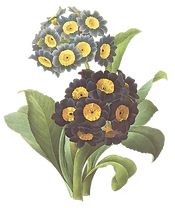Much Mulleined Flower
- Cynthia Thomas
- Jun 20, 2017
- 3 min read
A few years back a soft, velvety rosette popped up in my garden bed. At first I thought it was lamb’s ear, but the leaves outgrew any I’d ever seen. I watched as the mound grew larger and larger – about the size of a pie plate. It was interesting, if not pretty. And I’m always curious to see what the garden produces.
The leaves seemed to survive that first winter and the second year, the plant took off with a vigorous start. It sent up a large center stalk that produced a cylindrical flower head with small yellow flowers. The gold finches and bees were drawn by the color and height. By this time it was so big, I felt guilty about plucking it out.
I noticed, as you usually do once you become aware of a thing, that mullein grew all along the roadside and pathways – even peaking out of sidewalks and on gravel banks. Turns out it has one of those spike tap roots, so it can literally grow anywhere. And that’s probably why many gardeners and horticulturists now categorize it with “invasive” plants.

But truly, mullein is impressive; and shouldn’t we try to work with nature – not against it?
At a ‘natural pesticide’ seminar I attended recently, one of the greenhouse growers said that they were advised to have mullein (pronounced – mull’ / in) plants set in containers throughout their rows to invite “beneficial” insects to propagate that would eat the harmful bugs. Being such a large, hairy plant, mullein is host to many insects.
According to gardenguides.com, Verbascum thapsus (great mullein or common mullein) is a species of mullein native to Europe, northern Africa, and Asia, and was first introduced into the U.S. in the mid-1700's, where it was used as a piscicide, or fish poison, in Virginia. It quickly spread throughout the U.S. Records show that it was described in Michigan in 1839 and on the Pacific coast in 1876, probably due to multiple introductions as a medicinal herb.
“Cowboy toilet paper” is one of its most common uses, but American pioneers developed several applications: the flowers steeped in oil for an ear ache remedy, the dried leaves boiled in water for respiratory health and the flower spike dipped in suet to use as a torch. These herbal remedies are still widely used today by practitioners of “permaculture” - a word coined in the 1978 by two Australians who developed priniciples of sustainable gardening and social engineering to maximize a plot of land.
As you can see in this adorable “Permies” Youtube video , mullein may be maligned for it’s prolific tendencies, but that is part of the beauty of this plant. It goes (usually be bird droppings) to places that have been abandoned. Old home places and farms, waste places and railroad beds that have been disturbed by humans but now left alone are perfect settings for this two-year plant to get established.
It grows in a wide variety of habitats, but prefers well-lit, disturbed soils, where it can appear soon after the ground receives light, from long-lived seeds. By sending roots deep in the soil, mullein draws up the minerals and sequesters the nutrients. It rarely becomes aggressively invasive, since it require open ground to germinate. It is a very minor problem for most agricultural crops, being intolerant of shade from other plants and unable to survive tilling.
In fact, it seems to me that this plant has so many useful qualities that it’s time we adjust our opinion of mullein. While we may not be ready to give up our geraniums and quilted toilet paper, couldn’t we leave a little room in the yard to let nature take its course and teach us her healing ways?

















